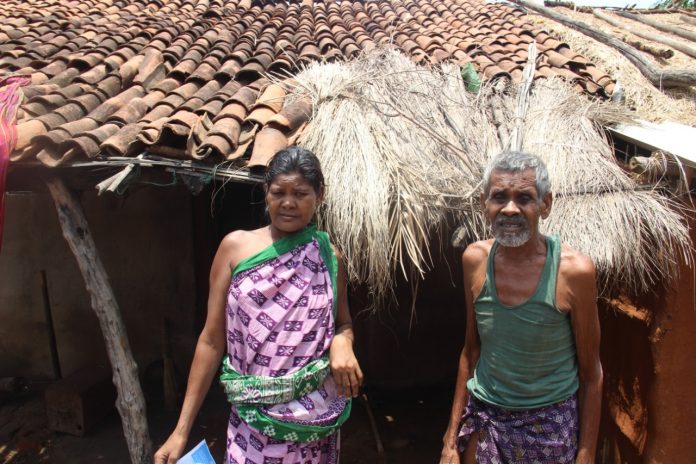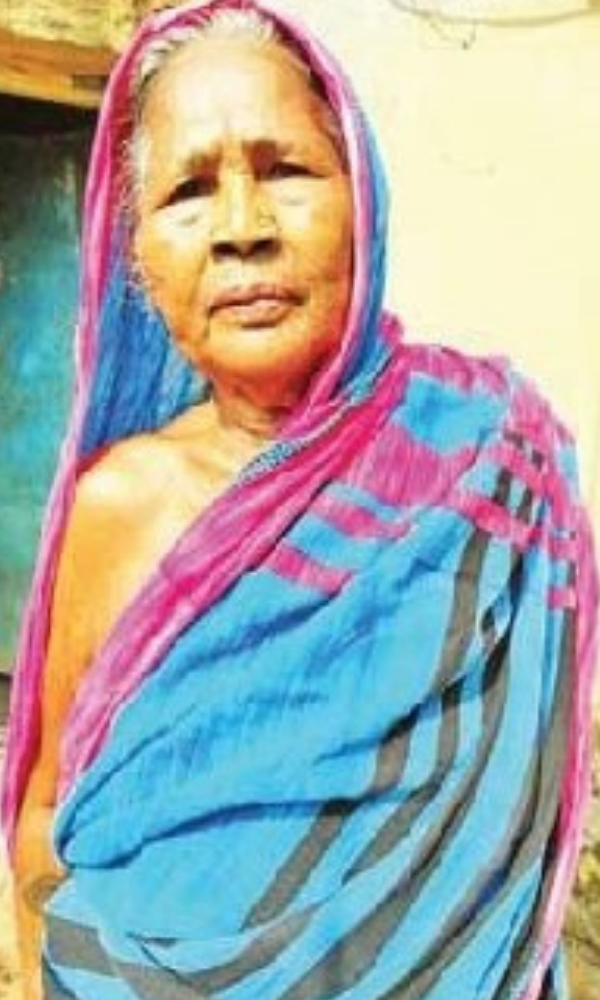
Lakhs of people are victims of deprivation ever since mandatory Aadhaar-linking to various social security benefits was introduced. Countless such Catch-22 like cases exist in states like Odisha, where Aadhaar linking has been made mandatory.
Suchitra | TwoCircles.net
ODISHA – Sabitri Pradhan of Mundamal village in Jajpur district Odisha is entitled to a widow pension and an elderly pension guaranteed by the Odisha government. She applied twice for an Aadhaar card but was rejected since her bio-metric couldn’t be captured. The administration says she can only be provided with a ration card or pension if she submits her Aadhaar; which she cannot.
Lakhs of people like Sabitri are victims of deprivation ever since mandatory Aadhaar-linking to various social security benefits was introduced. Countless such Catch-22 like cases exist in states like Odisha, where Aadhaar linking has been made mandatory.

The Bill seeking to link Aadhaar with one’s voter ID was passed in both Houses of the Parliament in the 2021 winter session. The Union government says the Election Laws Amendment Bill will eliminate bogus voters and bring about transparency. However, in practicality, it threatens millions of Indians’ voting rights.
The linkage of Aadhaar cards to various schemes in the past has been proven devastating for millions of people from marginalized communities.
Aadhaar is not proof of voting rights. It is not and was never intended to be, evidence of citizenship, which is why Aadhaar numbers were provided to all residents rather than citizens. Only citizens who are residents of India have the right to vote under the Representation of Peoples Act. Connecting the two makes no logic and would be a tremendous waste of taxpayer cash.
Although reports indicate that any linking will be ‘voluntary’ in nature, many are concerned that it will almost certainly lead to mass voting-rights disenfranchisement.
Previous attempts to use Aadhaar to “clean up” the registries of other welfare schemes, like the National Rural Employment Guarantee Scheme (NREGS) and public distribution system (PDS), have resulted in mass exclusion, all caused by tech, and thousands of citizens have been arbitrarily disentitled from systems without any notice.
For example, a study from Jharkhand found that 90 per cent of ration cards cancelled as “bogus” during the Aadhaar linking between 2016 and 2018 were real.
Largely, the excluded beneficiaries were from Dalit and Adivasi communities. Taking a look at Odisha’s list of “invalid” or excluded Aadhaars, Malkangiri, which is the district with the highest tribal population is also the district with the highest percentage, 44.7%, of invalid Aadhaars.
Even the CEO of UIDAI has previously admitted that authentication failure for public benefits could be as large as 12% – which translates into lakhs of excluded residents.
Fingerprints are ineffective for many people, particularly the elderly and those who are engaged in casual labour. Most Dalit and Adivasi people are engaged in casual and manual labour, and manual labourers form a quarter of the workforce in India. This impacts their fingerprint biometric and has excluded many such manual labourers since the lines on their thumbs have disappeared due to rigorous manual labour – their source of daily wages.
Purundhar Ketki is an Adivasi man in his 70s, who has done manual labour all his life. In his old age, and due to the manual labour, his fingerprints have deteriorated. He hasn’t received an Aadhaar even after applying multiple times.
Face and eye authentication are incorrect and error-prone, especially considering people with disabilities.
The use of biometric identification for voting might be extremely dangerous. The Right to Food campaign has revealed massive inadequacies in Aadhaar linkage and biometric authentication as a result of inadequate infrastructure and grievance redressal mechanisms in UIDAI’s implementation.
Rethink Aadhaar, which is a non-partisan campaign concerned about the Unique Identification or Aadhaar project, has also raised its concern against the Bill.
“Through an ill-conceived “nominee system,” and OTPs in the case of assistance programmes, UIDAI has attempted to avoid the inaccuracy and difficulties in biometric authentication. This will not operate while voting in election booths set up in distant and inaccessible places, where votes must be manually processed. Furthermore, because EVMs are stand-alone devices that are not linked to the Internet, how would biometric verification work?” Rethink Aadhaar questioned in a statement against the Bill.
Suchitra is an independent journalist working on social justice, focusing primarily on gender justice. She tweets at @Suchitrawrites

